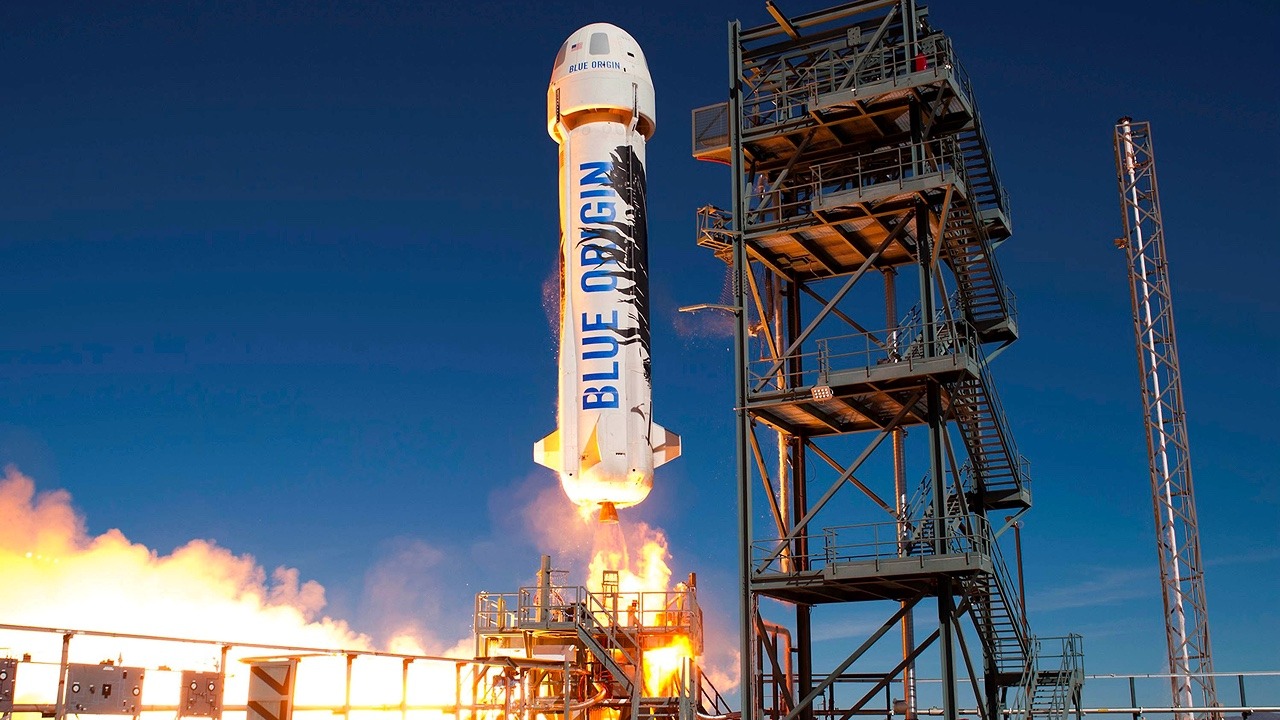
Blue Origin, the private aerospace manufacturer and sub-orbital spaceflight services company, has set its sights on November 9 for the second launch of its heavy-lift rocket, New Glenn, from the Kennedy Space Center in Florida. This mission is of particular significance as it will carry Mars-bound NASA satellites, marking a significant step in the exploration of the red planet.
New Glenn Rocket Development
As Blue Origin’s heavy-lift rocket, New Glenn plays a pivotal role in the company’s space exploration ambitions. It is designed to carry out missions like this second flight, which will transport NASA satellites to Mars. The progression from the first New Glenn launch to Flight 2 has been marked by a focus on reusability features, a key aspect of Blue Origin’s approach to space travel.
Blue Origin’s overall ambitions with New Glenn extend beyond orbital missions. The company has its sights set on deep-space objectives, with the Mars-bound mission serving as a testament to these aspirations. The successful execution of this mission will be a significant milestone in demonstrating New Glenn’s capabilities for future deep-space missions.
Announcement of the Launch Date
Blue Origin officially targeted November 9 for New Glenn Flight 2, as announced on November 6, 2025. The NG-2 designation in the announcement signifies a step toward operational cadence, indicating the company’s intention to establish a regular schedule of launches. This date aligns with broader mission timelines for Blue Origin’s second New Glenn launch, which was eyed as early as November 5, 2025.
Mars-Bound NASA Satellites as Payload
The payload for New Glenn’s second launch comprises Mars-bound NASA satellites. These satellites have been selected to contribute to Mars exploration data, furthering our understanding of the red planet. However, integrating these satellites with New Glenn Flight 2 systems presents certain challenges, given the complexity of the mission and the unique requirements of the payload.
Booster Transportation to Launch Site
As part of the preparations for the Mars-bound mission, the New Glenn booster was transported to the launch site on October 8, 2025. This involved logistical aspects such as ensuring the safe and secure movement of the booster. This step is crucial in supporting the timeline for New Glenn Flight 2 preparations, allowing for necessary checks and adjustments before the launch.
Satellites’ Arrival at Kennedy Space Center
The Mars-bound satellites arrived at the Kennedy Space Center on September 23, 2025. Upon arrival, they underwent processing and storage procedures in preparation for the upcoming launch. This milestone marked a significant step in the overall readiness for Blue Origin’s launch, ensuring that the satellites are in optimal condition for their journey to Mars.
Launch Site Preparations and Timeline
The sequence of events leading up to the launch began with the arrival of the satellites on September 23, 2025, followed by the transportation of the New Glenn booster on October 8, 2025. The final integration steps at the Kennedy Space Center launch site are now underway, leading up to the targeted launch date of November 9, 2025. However, potential weather or technical contingencies could impact the timeline for New Glenn NG-2.
Strategic Importance of the Mission
The launch of New Glenn Flight 2 with Mars-bound satellites is a strategic move for Blue Origin, advancing its competitive position in the launch market. The mission also signifies a strong partnership with NASA for this deep-space mission, further solidifying Blue Origin’s role in space exploration. Moreover, the mission will serve as a demonstration of New Glenn’s reliability following its inaugural flight, reinforcing confidence in the rocket’s capabilities for future missions.
More from MorningOverview